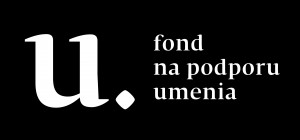Visual Culture of Russian Beringia
This project has been supported using public funds provided by the Slovak Arts Council. This publication reflects the views only of the author, and the Council cannot be held responsible for the information contained therein.
This research was supported by the Slovak Research and Development Agency (under the contract No. APVV-14-0431).
Synopsis of the work in progress:
What are conditions for emergence, forming and transformation of visual culture? This is the basic question of my research project, based upon an original interdisciplinary conceptual frame, as well as upon rich and unique field material of indigenuous culture and art of Russian Beringia. The research targets to prepare a publication manuscript which will closely analyse regional visual representations but mainly reveal common valid mechanism of how sociocultural context and environment are conditions for interaction between visual perception, aesthetic preference and art presentation. The publication thus focuses on triggering interdisciplinary discussion as an intersection of achievements in theory of art, social science and cognitive science. A large number of examples and case studies will place the study among supplementary educational literature in the field of art and visual anthropology, which is completely missing in Slovak educational environment. Finally, non-ordinary theme and appealing illustrative material will capture the interest of general audience.
Description of the research related to the monograph in preparation:
The research project endeavours to explore the process of setting visual perception and visual representation, in a quest of revealing interaction between culture and visuality in the context of human experience. I am specifically interested in the way how different socio-cultural experience reflects differences in visual perception and diversity of visual representation. How do perceptional styles and specific patterns of social interaction set conditions for each other? What exactly defines different visual and art tradition in a particular cultural context? These questions are explored through indigenuous art material and visual culture of Russian Beringia (Chukchi and Jupigyt Eskimos people). In my research, I will present methodological progress: beside the semiotic approach, which dominates in visual research and social sciences, I am also focusing on a form as an indicator of perceptional style induced by a specific culture. Furthermore, I am using holistic and analytic approach to prove what is the relation between these extreme representations of perceptional style and self-construal dominant in a particular community and how this relation propagates into art form. I start on the premise that the form of visual representation, far more than its content, reflects the way how members of a particular community and period perceive themselves and their environment and how these perceptions change into visible and visual forms. As far as theory is concerned, my study is based on works of a number of authors (A. Fienup- Riordan, S. Arutiunov, R. McGhee, V. A. Tishkov, J. W. Berry, R. Barthes, R. E. Nisbett, S. Kitayama, T. Masuda etc.). Essential part of my study is based on field data, collected in Chukotka in 2008, 2010, 2011 and 2014. The one-year’s project’s goal is to prepare a scientific monograph, unique in a Slovak academic environment, unique not only for how it interconnects art science, anthropologic and cognitive conceptions and methodologies, but also for its collection of Polar Russia field data. Apart from detailed analysis of local artistic performancies, the publication will show commonly used formative mechanisms of visual culture and conditions of visual representation origins. The study challenges conceptual borders between aesthetic levels (highbrow, middlebrow and lowbrow culture), which are applied in Western science but that are not applicable on indigenous visual culture.
Target readers:
The monograph is intended for a) professionals – artists, art historians, sociologists, anthropologists, philosophers – as a stimulus for an interdisciplinary reflection on visual culture development in various cultural contexts. The accumulated material may be especially inspiring for the Arctic and Siberia territory explorers. b) For students of artistic and sociological fields of study as a supplementary educational literature in idigenuous art, visual culture and visual anthropology, unique in Slovak environment. c) For non-professionals and wider professional public who may take interest in the number of case studies and examples from field research and culture
Time Plan:
1.10.2016 – 30.9.2017 research and writing-up; supported by the stipend of the Slovak Arts Council
1.10.2017 – 31.10.2017 final work on the visual annexes
1.11.2017 – 31.3.2018 review process
1.4.2018 – 31.7.2018 proofreading, editing
1.8.2018 – 31.10.2018 2nd review process
since 1.11.2018 preparation of the publication
2019 the publication is out
About the author:
Jaroslava Panáková received her PhD in Sociology of Culture at St. Petersburg State University in Russia and her MA in documentary cinema at FAMU Prague, Czech Republic. She carried out her postdoctoral research at MPI for Social Anthropology in Halle, Germany and at the CNRS, Paris, France, and at Vienna University, Austria. Her research interests include mobility, sensory anthropology, and Siberia. She is currently lecturer at the Institute for Social Anthropology, Faculty of Social and Economic Sciences, Comenius University in Bratislava, Slovakia.
Her principal publications are: 2014 The Grave Portraits and the Ancestralization of the Dead (Chukchi and Yupik Eskimo Case). Special issue on Visual Anthropology, Slovenský Národopis, 62(4), pp. 505-521; 2014 in co-authorship with Istomin, Kirill & Heady, Patrick. Culture, Perception, and Artistic Visualization: A Comparative Study of Children’s Drawings in Three Siberian Cultural Groups, Cognitive Science, 38, pp. 76-100; 2012 Sense of Distant Hereness: Making and Unmaking Oneself at Home (Case of Chukchi and Yupik), 185-197, in Filippova, E. (Ed.). Twenty years later 1991-2011. The Reshaping of Space and Identity (Moscow, Russian State University for the Humanities).
Contact: haliganda@gmail.com
Links
http://onlinelibrary.wiley.com/doi/10.1111/cogs.12051/pdf
https://www.eth.mpg.de/cms/en/publications/working_papers/wp0131
https://fses.uniba.sk/pracoviska/ustavy/ustav-socialnej-antropologie/pracovnici/jaroslava-panakova/










